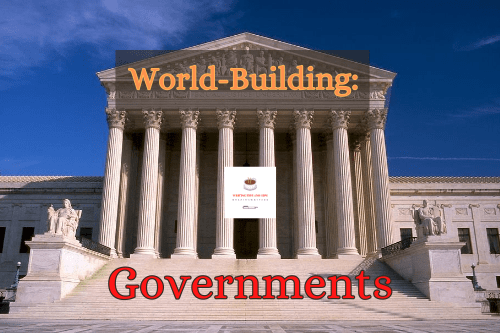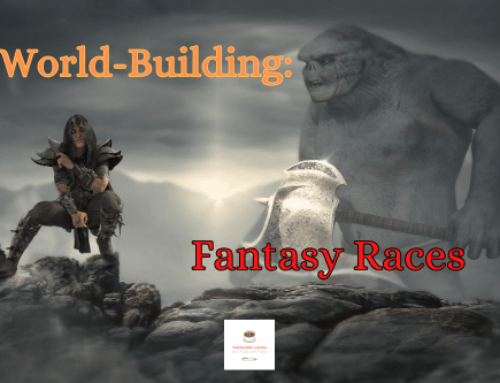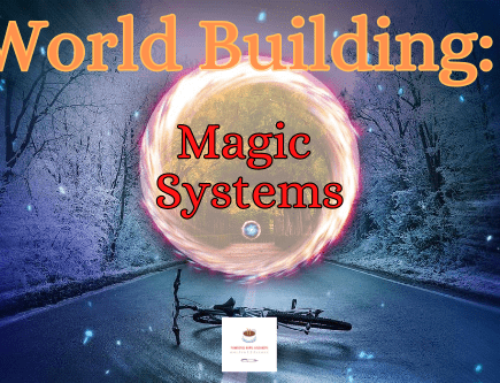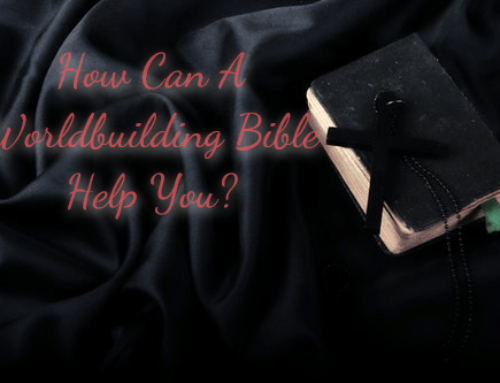I am in the process of writing a complex and deep high-fantasy series. Part of fantasy writing and stories with deep political upheaval involves writing governments that are not only believable but affect the world as a whole. Magic and races are important keys in determining the beliefs of your societies and how societal pressures shape the world.
After developing your magic systems, races, and societies, you must figure out who governs them and how they rule. There are many different approaches to take when it comes to world-building governments. Still, in stories where your protagonist is trying to overthrow a corrupt leading power, that power must be felt throughout the world.
In Stone of Dragon’s Heart, I have a myriad of different political groups working together to dethrone one political dictator. Each nation has its own form of government, which adds a level of realism and conflict when the groups interact. The struggle of power is a source of conflict throughout my series.
For a conflict to translate to the reader, there must be an understanding of how governmental power works within each nation. So, Today I want to talk about the different types of governments, how they work in a historical context, and an example of how they could be used in fiction.
First up:
Table of Contents
Types of Governments:
When writing a fantasy world, there are many approaches to take when it comes to how your nations and races are governed. The best approach is to investigate history and see how empires grew and fell. Figuring out what your societies value and how they develop their power is the best way to figure out how they will govern themselves.
History is a fantastic starting point to add realism to your cultures and societies. However, it is your world, and you do not have to stick with the governments that already exist. Considering the themes of your story, it is crucial to work your system around them. You can combine governmental approaches to create something unique to your world.
Your cities can have an Anarchist region that is lawless, and potentially dangerous or even nomadic in nature. Or, you can take the Monarch approach, as I have, replicating that of medieval Europe. You can have a religious theocracy, which tries to hide magic from the common people.
The possibilities are endless. In this article, I want to talk about a few types of government: Anarchy, Democracy, and Monarchy; briefly explain how they work, and how they could fit into a larger fantastical world.
Let’s start with:
Anarchy:

As stated earlier, anarchy is often seen as a lawless region inflicting danger and chaos. Though, here I would like to challenge those ideas a bit further. Anarchy is a system without rules, that aims to make illegitimate and dismantle social hierarchy. Anarchy has order, and it places those who are systemically oppressed into a place of equality.
The idea is to look at the state, defined as (by Taylor Avella), 1. A centralized institution of power with a monopoly on the use of violence. 2. A geographical area over which this violence is exercised, and 3. An administrative body that lays claim to this use of violence. An example would be the U.S. police force using violence over its citizens. You can read about how to write against said oppression here.
And, question the necessity of the said state. Anarchy is not an end goal but an ever-changing process concerned with the rights of those affected by institutional power. Anarchy can have a chieftain or even be nomadic in nature, not claiming the land of any specific region.
In history, The French Revolution is a crucial example of anarchy in progress with events such as the Women’s March on Versailles, The Storming of the Bastille, and the Réveillon riots. (Wikipedia) These events were used in the fall of the French monarchy and sought to improve the lives of the oppressed.
Anarchy in Practice:
In writing your dystopian fantasy, or fantasy regions, anarchy might be best used in a nomadic group filled with outcasts from surrounding societies banded together to create their own commune.
In Stone of Dragon’s Heart, magic users, specifically those who practice elemental magics, are oppressed and seen as everything wrong with society.
Elemental magic practitioners are often banished from their cities and forced to survive on their own. They end up forming The Academy. It’s a school where practitioners come together and learn the art of their magic. It’s an anarchist commune formed to dismantle the rising fascist monarch of the tamalirian people.
Often, The Academy is seen harassing and blocking tamalirian movement and freeing tamalirian slaves. They do what they can to help the oppressed peoples of Symphonia, including infiltrating secret organizations and assassinating high-value targets. I have multiple characters who have histories tied with The Academy, and it is a constant mystery alluded to in the first book of my series.
Democracy:
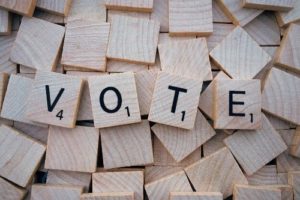
A system in which citizens exercise power in government or elect representatives to exercise power with said citizens in mind (Knowledgia). The most popular example is the idyllic representation of the United States government. The citizens elect their senators, governors, and president to best represent how the people as a whole feel on particular issues.
There is a separation of power and state with a focus on the individual. Everyone is looking at their own self-interest and the interest of the common good. However, one of the problems with democracy, is not everyone has the time to inform themselves on all issues. This tends to lead to uninformed decisions.
Often, the best fix is to elect representatives to think of the average citizen. However, elections become more of a popularity contest over finding who is the best candidate for the job—leading to a system in which the corrupt rise to power with the manipulation of voting.
Currently, we see democracy paired with capitalism, in which the wealthy amass the most power in a race for gaining the most capitol. It is, however, possible to have a democratic monarchy, anarchy, or theocracy. The defining feature lies in the power of decision making landing on the citizens as a whole.
Democracy in Practice:
The Council of Elrond comes to mind when I think of democracy in fiction. In this chapter of The Fellowship of the Ring, we see many gathering to discuss the course of action regarding destroying the one ring.
“It is wisdom to recognize necessity when all other courses have been weighed, though as folly, it may appear to those who cling to false hope. We’ll let folly be our cloak, a veil before the eyes of the enemy! For he is very wise and weighs all things to a nicety in the scales of his malice. But the only measure that he knows is desire, desire for power; and so he judges all hearts. Into his heart, the thought will not enter that any will refuse it, that having the ring we may seek to destroy it. If we seek this, we shall put him out of reckoning” (Tolkien – The Fellowship of the Ring).
Gandolf is presenting his views to the Council of Elrond in this quote. He is showing the process of democracy by suggesting a plan and presenting his case so the council can vote with informed confidence that they are making the right choice. The Council of Elrond is made up of representatives from the different regions of Middle Earth. We have Boromir representing Gondor, Elrond representing Rivendell, Gimli, and Gloin, representing the dwarves.
It is in this scene when the council votes to form the fellowship and destroy the ring through a democratic process.
Monarchy:
*From HelloFutureMe*
Perhaps, the most popular form of government within the genre of fantasy. Monarchy is a form of government with a king/queen as the figure ahead. The leader is known as a Monarch, and there are many different reasons they come into power. One of the most popular reasons in Medieval times was the divine right of kings, basically saying god gives the king their power to rule.
In writing your monarchy, it is essential to have a reason for why your king is in power, be it because god said, or maybe they are a god themselves. The people in the nation can even elect them.
The king, in a monarchy, wants to stay in power and keep their wealth within their family. Often, they will do whatever it takes to defend their resources.
In developing, it is crucial to consider which powers matter to your society, and what said powers, rights, and liberties are essential to how your society works. Your monarch is going to exist in the center of a web of power – meaning they will not be alone in making all their decisions. A monarch has advisors, military leaders, and people in their corner to make sure they are making the best decisions to maintain their position.
Types of Monarchy:
Successive Monarchy:
A form of monarchy in which the throne is passed through a family tree. A common example is a king will receive the divine right of kings and take power in their region. They rule their kingdom until they die and pass the throne to their firstborn son, and so on. This cycle will go on until the people rebel or another nation forcibly takes control. Often marriages would be arranged in this system to form a peace treaty.
Elective Monarchy:
It’s similar to a democracy where the leader is voted in. However, once elected, the monarch can stay in power for virtually ever. This type of monarchy quickly becomes a tradition over an actual system, and the role of succession becomes about the continuity of the government.
Elective monarchies are often paired with another form of government; like a democracy where the king and queen are tied to the rules of a constitution, and cannot do anything outside of that governmental agreement.
Feudalism:
In nerdy terms, it is the next level of a monarchy. The ruler has amassed so much land; they can’t manage all of it themselves. To take better control of their region, they give land to nobles for their loyalty in return.
Often, this comes in the form of military power or resources. The Nobles would collect from the peasants living on their land to provide for the monarch. This system allowed the ruler to be hands-off with their land, but also led to people taking advantage of the land.
Monarchy in Practice:
In Stone of Dragon’s Heart, I have both a democratic monarchy and a traditional successive monarchy. The book follows from the point of view of the race of elvines living in the city of Ul’rog. The elvines elect their king or queen based on the merits of what they have achieved for Ul’rog.
King Samuel, was elected during the tamalirian war, after constructing a spiritual ward around the city. His ward fended off the attack of tamalirian invasions allowing the people of Ul’rog to return to peaceful lives hidden from the enemy. One could argue, that Ul’rog is a theocracy since the constitution is based on the teachings of Adna, the elvines goddess of spirituality.
The enemy of the book, the tamalir, have a successive monarchy. King Derek started the war during the old days. Once he was killed, by Ul’rogian assassins, the title of king was passed to his son, Trivium. Trivium assumes absolute power over the tamalirian city of Delarium. His will is the will of the people, and no one dares question his intentions.
Conclusion:
Though I have talked about a few different forms of governments you can include in your world-building here; it is important to know there are many options. It may be wise, and ultimately help your story stand out if you decide to merge different forms of government to create your own unique system.
The fun part is playing around with the different systems and finding what best fits the themes of your narrative.
C. D. Baron
Latest posts by C. D. Baron (see all)
- What is The Novella? Why You Must Write One to Improve Your Skills! - 03/21/2021
- Wake Up! A Short Story (Work in Progress) - 02/07/2021
- My Top 5 Favorite Reads of All Time (So Far) - 01/24/2021
